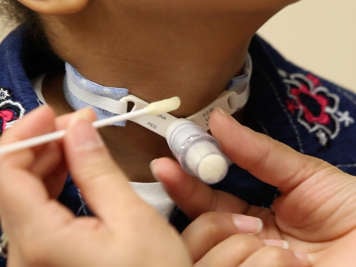
Your child’s stoma is the opening in their neck for their tracheostomy tube. Stoma care involves cleaning the skin around the stoma. This will help prevent infections. Remember to keep the stoma and neck area clean and dry throughout the day.
How often should I care for my child’s stoma?
You should clean the skin twice a day, for instance first thing in the morning and just before bedtime.
You may need to clean the stoma more often if your child is producing more mucus or if the skin appears to be crusting, swollen, red or tender to the touch.
How long should it take to clean the stoma?
Each stoma care session should take about 15 to 20 minutes.
How do I prepare to clean my child's stoma?
- Make sure your child’s tracheostomy tube has been suctioned and your child has recovered (is breathing normally again and not coughing). Keep the suction catheter clean and available in case you need it again during the stoma cleaning.
- Make sure the tracheostomy tube is stable and not at risk of falling out while you clean the skin.
- Gather your equipment and supplies.
Stoma care supplies
You will need:
- tracheostomy cleaning supplies
- your child’s tracheostomy change kit
- additional equipment and supplies
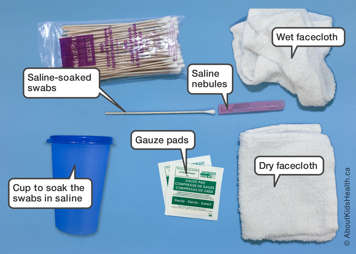
Tracheostomy cleaning supplies
- Saline-soaked cotton swabs (single use)
- Disposable container (or clean cup that you can reuse) for water
- Saline nebules
- Gauze pads
- Wet facecloth and dry facecloth
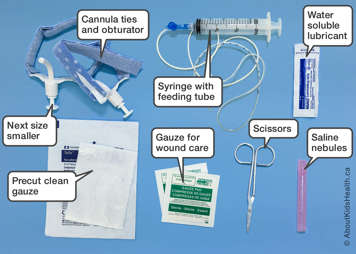
Tracheostomy change kit
- Tracheostomy tube with ties attached and obturator of the same size
- Tracheostomy tube one size smaller with ties attached and obturator
- Clean pre-cut tracheostomy gauze (dressing)
- Manual suction device: 20 mL syringe with feeding tube attached (in case the suction machine does not work)
- Water soluble lubricant
- Round-ended scissors
- Normal saline nebules (small, sealed tubes filled with saline)
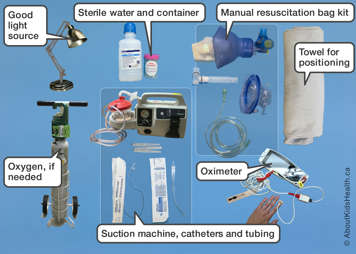
Additional equipment and supplies
- Sterile water and container
- Good source of light
- Suction machine, tubing and adjuncts
- Manual resuscitation bag with tracheostomy adaptor and the appropriate sized mask
- Oxygen, if needed
- Oximeter and probes
- Small towel or blanket, to help your child stay in position
Try to organize these supplies in one area in your home so that you can access them easily.
How do I clean my child’s stoma?
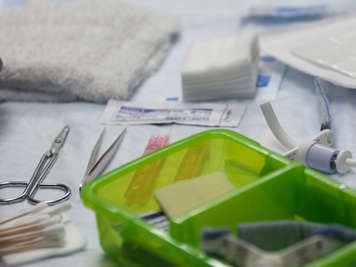
- Remove any wrapped supplies from their packaging.
- Pour the sterile water or sterile saline into the clean disposable cup.
- Suction your child, if needed.
- Have your child lie on their back, place a small rolled towel behind their shoulders and remove or loosen their shirt. Older children may be more comfortable sitting up for stoma care. Whatever position you choose, make sure your child is comfortable before you proceed.

- Loosen the tracheostomy tube ties.
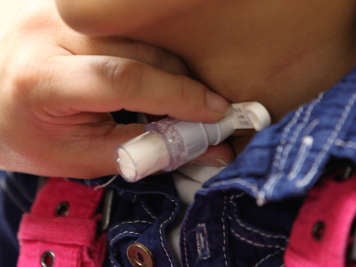
- Keep the tracheostomy tube stable by holding it still with one hand or having another person hold it still. This reduces the risk of the tracheostomy tube falling out during the cleaning.

- Remove your child’s old dressing and throw it in the garbage. If the dressing is stuck with dried secretions, gently apply sterile water or saline to soak it off.
- Check the colour and amount of mucus and if there is an unpleasant smell. Contact your healthcare provider if needed.

- Check the skin around the stoma. Watch for:
- redness or swelling
- thick yellow or green secretions
- crusting or dry secretions
- a bad or strong smell
- pain or soreness around the stoma
- extra granulation tissue (build-up of skin cells).

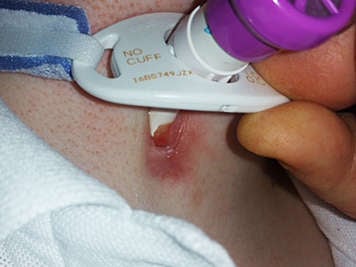
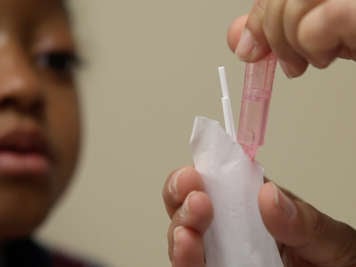
- Dip the tip of a cotton swab into the sterile water or saline. Gently clean the skin with the swab, using each swab for only one wipe before throwing it away.
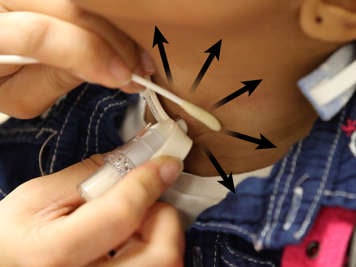
- Wipe outward from the stoma.
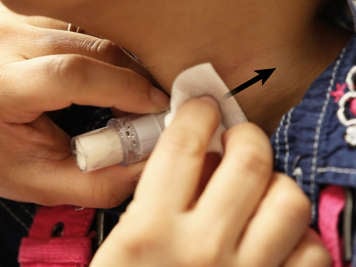
- Clean away all crusted secretions from the outside of the tube.
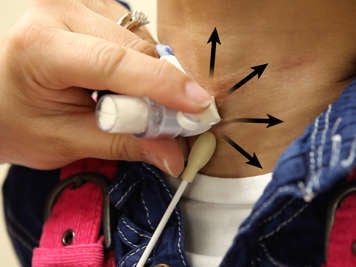
- Clean the skin under the tracheostomy ties and in any skin folds in the neck.
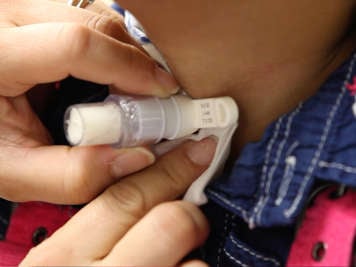
- Dry the skin with dry swabs or gauze.
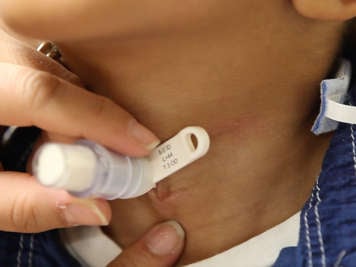
- Check the stoma to see if it is wider than usual. If it is, contact your healthcare provider.
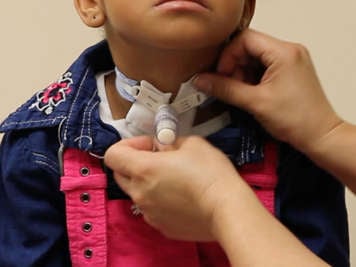
- If your child needs a dressing, gently put the new pre-cut dressing around the stoma. Do not twist the tracheostomy tube, pull on the flange of the tube or push the dressing in too firmly. Use the end of a clean cotton swab to help push the dressing under the flange. Sometimes, dressings keep moisture against the skin, which leads to irritation. If this happens, try removing the dressing to allow the skin to dry or "air out."
- Change the tracheostomy tube ties when they are dirty or when the Velcro no longer holds properly.
- Throw any dirty water into the toilet.
- Place dirty swabs or gauze in a plastic or paper bag and throw it in the garbage.
- Clean the water containers. If you used disposable cups, throw them out.
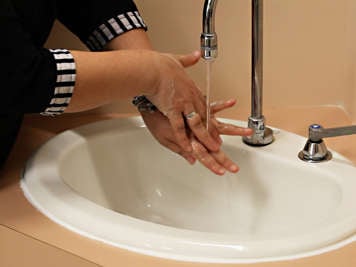
- Wash your hands well.
- Gather clean supplies so that they will be ready for the next cleaning.
- If needed, suction your child one more time. Make sure your child is recovered and breathing normally afterwards.
How do I prevent and manage skin breakdown at the stoma site?
To prevent skin breakdown or infection:
- do daily stoma care (see steps above)
- change dressings as needed throughout the day to keep the stoma and neck clean and dry
- apply any ointments that are prescribed by your doctor to a clean, dry stoma (ointments should be petroleum-free and alcohol-free)
- avoid any rubbing of the tracheostomy tube and secretions that can irritate the skin around the stoma
- avoid over-tightening the tracheostomy tube ties
- avoid attaching tracheostomy tube ties too loosely.
Children with new tracheostomies or those using ventilators at home may need to have more frequent stoma care.
Precautions
- Do not use Vaseline, other petroleum-based products or DuoDerm for stoma care.
- Do not use lotions and powders, as your child can breathe them into their lungs.
- Tell your healthcare team as soon as possible if you notice redness, a rash, granulation (extra tissue growth) or excoriation (skin abrasions) at your child's stoma site.
